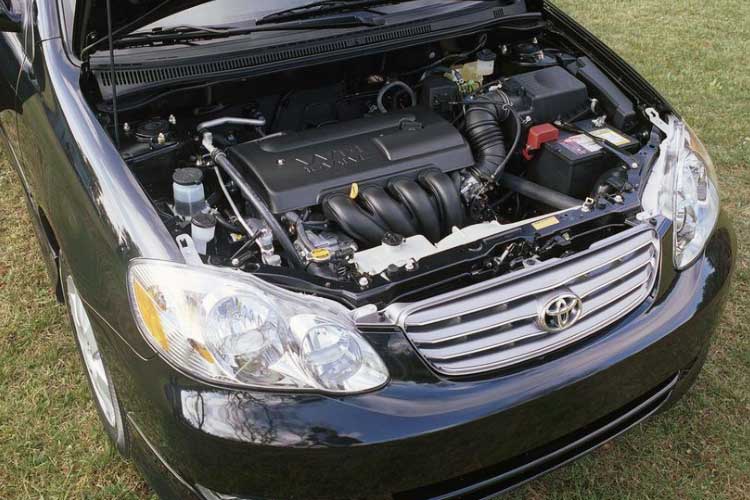Car Overheating After New Radiator (Solved!)
So you have replaced your damaged radiator with a new one. And you’re convinced you did everything correctly. But after you start driving your car, it starts overheating. What could be causing your car to overheat after a new radiator?
Car overheating after new radiator means there’s air trapped in your car cooling system which create hot spots, causing your temperature gauge to spike. Also, your car overheating after a new radiator could be due to other faulty cooling system components such as a radiator cap, broken water pump, cooling fan, worn belt, and so on.
Our complete guide below contains more helpful details about all the possible causes for your car overheating after a new radiator and all the fixes you should consider to help you fix this issue.
Why your car is overheating after new radiator
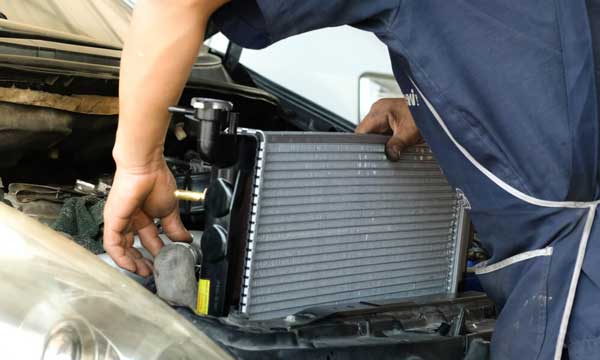
The most common reason why your car is overheating after radiator replacement is air getting trapped inside the cooling system after the installation process.
However, it could also be caused by other problems with your cooling system. These include the pressure cap, thermostat, water pump, radiator hoses, overflow reservoir, etc.,
You may also have forgotten to plug in the temperature sensors or cooling fan after the installation process.
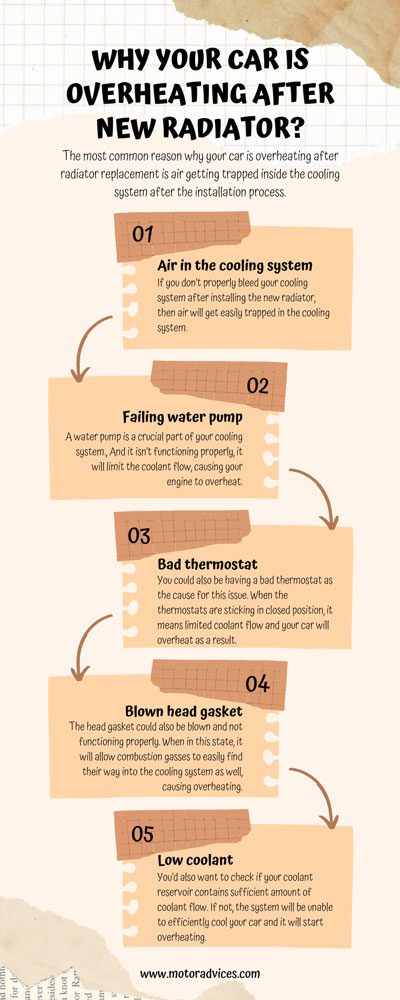
Here’s the full list of all the potential cases of your car overheating after new radiator:
Air in the cooling system
If you don’t properly bleed your cooling system after installing the new radiator, then air will get easily trapped in the cooling system. This air is notorious for creating hot spots and causing your engine to overheat.
If you install the radiator and you’re sure your cooling system has no other faults, then you’d want to burp the system to get rid of the air and hopefully resolve the overheating condition.
Failing water pump
A water pump is a crucial part of your cooling system., And it isn’t functioning properly, it will limit the coolant flow, causing your engine to overheat.
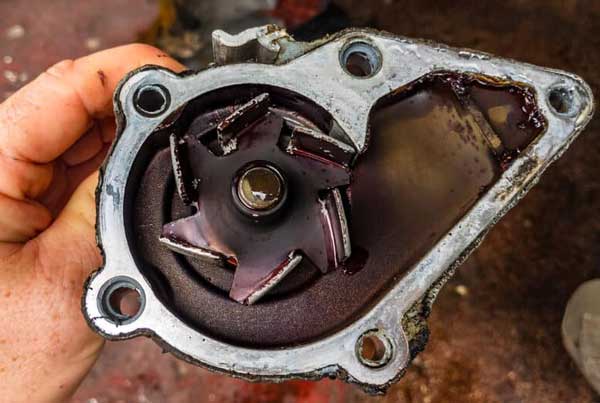
Bad thermostat
You could also be having a bad thermostat as the cause for this issue. When the thermostats are sticking in closed position, it means limited coolant flow and your car will overheat as a result.
Blown head gasket
The head gasket could also be blown and not functioning properly. When in this state, it will allow combustion gasses to easily find their way into the cooling system as well, causing overheating.
If you purge all the air from your cooling system but it keeps coming back, then you most likely have a blown gasket.
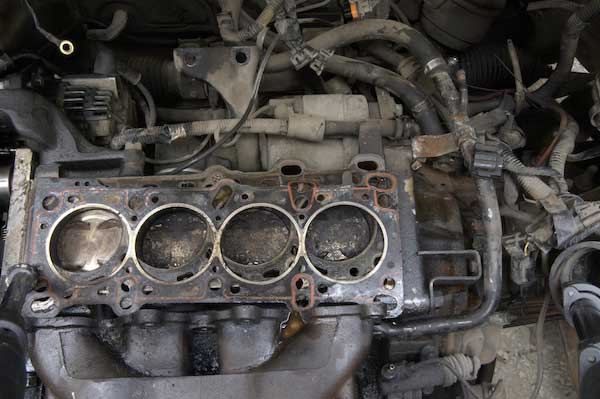
Low coolant
You’d also want to check if your coolant reservoir contains sufficient amount of coolant flow. If not, the system will be unable to efficiently cool your car and it will start overheating.
How do you deal with car overheating after new radiator?
Overheating is a serious issue and can easily damage your car engine, so you should have your car checked as soon as possible.
The first thing you should do if your car overheats after new radiator is check whether there’s air caught up in the cooling system.
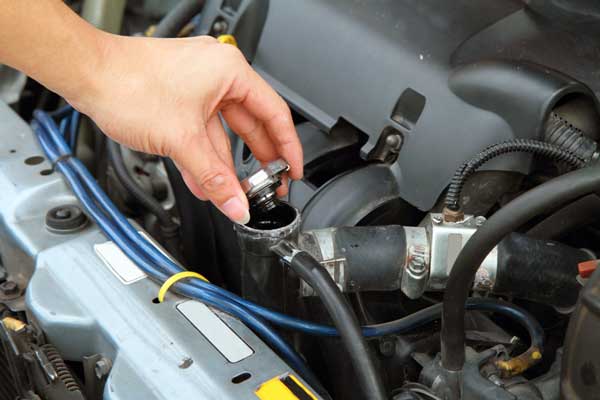
Here’s how you bleed your cooling system:
Step 1. Allow your car to cool down and then take off the radiator cap
Step 2. Start your car and allow it to idle up to the operating temperature (i.e., halfway on the temp gauge).
Step 3. Let it run for 10-15 minutes to ensure all the air moves out of the system.
Step 4. Now reinstall the cap and you’re done burping your cooling system.
TIP: In some cases, you may want to raise your car front up a ramp/incline to help with the burping process.
NOTE: Some car models come with a bleed valve with weird-looking square drive atop the water pump, so you should for that as well.
We come across this car-overheating-after-new-radiator case where the motorist had overheating issues after radiator replacement. He claimed that after taking the car to the dealership and they burped his car for free, the issue was resolved and the car started running perfectly afterward.
If your car continues overheating after removing the air, then it may have a problem with the thermostat or the water pump, or pretty much any other part of the cooling system.
Inspect whether the thermostat is stuck and whether the water pump is in good running condition as these are also major culprits behind this overheating problem.
Check for blown head gasket by running a block test to see if you can find any exhaust gasses in the coolant.
In this car forum where car owners were discussing their vehicles exhibiting overheating issues after rad replacement, one of them admitted to having found a blown head gasket as the culprit causing the issue.
In another discussion about this overheating condition, motorists who had cooling problems before suggested looking into the coolant level and temperature sender wiring.
An ASE-certified mechanic in the same discussion pointed out that the temperature gauge itself could be broken and misleading you.
Overall, we strongly advise against driving your car any further if it starts overheating after radiator replacement to prevent causing further engine damage.
Tow your car to an experienced auto mechanic to have it checked and fixed so it runs perfectly again.
Why your car is overheating after new radiator and thermostat?
In some cases, you may replace your radiator and thermostat and your car still overheats.
A Redditor had this similar issue with their car and most folks pointed out various issues as the key causes for this problem.
Replacing the radiator and thermostat only will not solve the overheating problem unless the other parts of the cooling system such as the water pump, cooling fan, etc. are working correctly.
In other words, overheating in this case means there are problems with your engine cooling system that needs to be fixed.
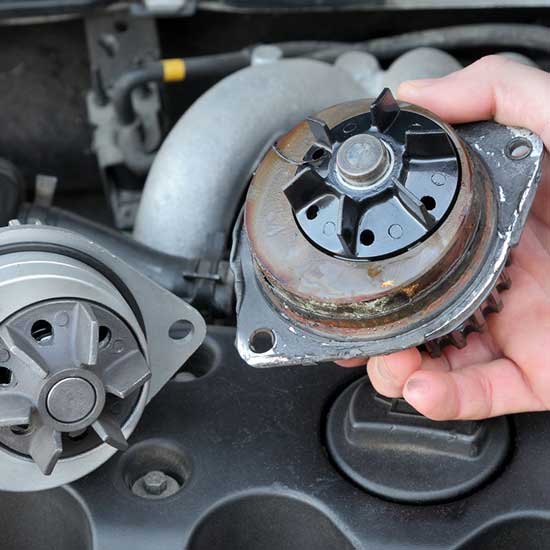
Check whether the water pump is defective and needs to be replaced.
You should also check if the radiator fan is toasted, whether the electric coolant sensor is working correctly, the condition of cladding in the radiator hoses, a failing engine head gasket, and so on.
There are many possible issues that could be causing your car to overheat even after changing the thermostat and radiator.
Follow this discussion at Motor Vehicle Maintenance & Repair Stack Exchange for more insights into the issue of overheating after radiator and thermostat replacement.
We advise you to get a good mechanic to take your car through a full diagnosis and pinpoint the exact problem.
Why your car is overheating after new radiator, water pump, and thermostat?
If you have installed a new radiator, water pump, and thermostat, and your car is overheating, this is your part. This is the same issue experienced by this motorist and he got interesting responses from experienced car owners which you should check out.
Having replaced all these parts, you expect your car not to overheat. But if this still happens, there are a few things to look into.
The first culprit to consider is air that may have been trapped in the cooling system. You may try bleeding out this air using the procedure we explained earlier in this guide and see if it helps fix the problem.
It’s also likely that you installed the thermostat incorrectly (i.e., backward), meaning it won’t be functioning properly to regulate heat in your car.
A clogged heater core is another potential cause. Water passages in the block and head could also be coated with rust or hard water deposits, shielding coolant from coming into contact with the hot surfaces. Also, check if there is a constriction in one of the coolant hoses.
Lack of enough coolant in your system can also cause the overheating problem.
Malfunctioning electric fan is another possible cause of this problem. Incorrect timing may also be to blame.
Or it could be due to a mechanical issue such as failing head gaskets, cracks, etc.
Have a mechanic check if any installation errors in your new parts could be causing this problem. A good mechanic will also inspect your car for other likely culprits we’ve mentioned above and fix them for you.
Watch the video below for more helpful insights into the causes of overheating after replacing the radiator, thermostat, and pump.
What you should do after changing a radiator?
After successfully sitting the new radiator in place, you should fill it with the coolant. If the coolant wasn’t replaced, grab this opportunity to flush out the old coolant and then fill the reservoir with a new coolant.
Ensure you use distilled water to mix and add to your vehicle cooling system in the correct water-to-coolant ratio.
Next, bleed your cooling system to get rid of any trapped air that could cause overheating in your car. We discussed the bleeding process earlier in this guide, so we won’t go into the details again.
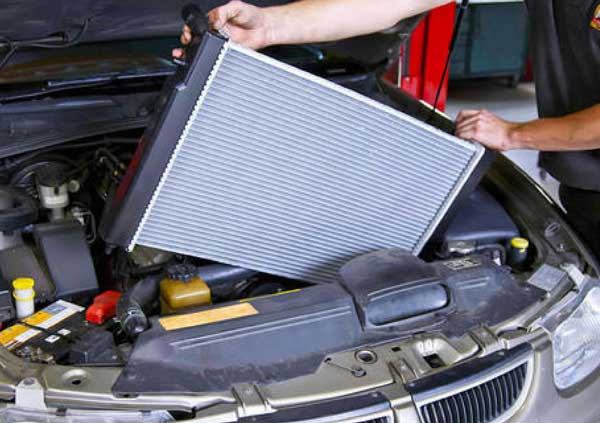
But keep in mind that the process varies between car models, so you’d want to consult your car repair manual for more info.
Recheck the level of coolant in its reservoir after the bleeding is done and your system has completely cooled off. You should also recheck your engine oil and automatic transmission fluids levels.
Should you replace thermostat when you replace radiator?
Generally, vehicle manufacturers don’t have clear guidelines on when to replace the thermostat. This is because this isn’t a part that requires routine maintenance and can last for extended periods of time.
Ideally, you should only replace a thermostat when it starts showing malfunctioning signs such as overheating, coolant leaks, heater problems, etc.
However, you may want to grab the opportunity to replace the thermostat when replacing your radiator or doing other cooling system servicing such as replacing radiator hoses, installing new water pump, flushing coolant, etc.
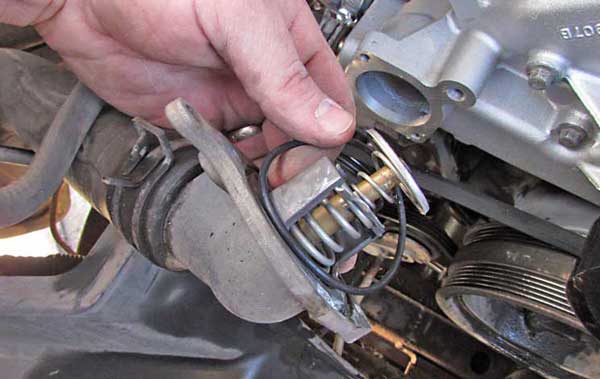
Replacing your thermostat during cooling system servicing makes perfect sense since the thermostat lies in the same area and is easily accessible. A new thermostat is also an inexpensive investment.
Above all, waiting until your thermostat gets damaged to replace it may exponentially increase the repair costs, so a new thermostat when changing the radiator is a wiser financial decision.
If you’re experiencing overheating issues after installing a new radiator, it’s important to address the problem as soon as possible to prevent damage to your engine. At MotorAdvices, we have articles that address a range of issues related to car overheating, including what to do after an accident and if your car is overheating and leaking coolant. Our article on car overheating after an accident explains the possible reasons for overheating and provides solutions to help you prevent damage to your engine. Additionally, our article on car overheating and leaking coolant discusses the common causes of this issue and offers tips on how to fix the problem. Visit MotorAdvices to learn more about how to keep your car running smoothly and prevent overheating, no matter what the cause.FAQs:
You can tell if there’s air trapped in your cooling system by looking for key symptoms of radiator airlock such as car overheating when driving normally, declining performance, a malfunctioning heater, and radiator leaks.
The cooling system bleeding process should take around 15 to 30 minutes depending on your vehicle model as well as the burping method you follow. Before that, you’ll need to give your engine 15-20 minutes to heat to the operating temperature and start cycling the coolant through the system.
You should always ensure your vehicle’s central heating system is turned OFF and wait for your radiator to cool down before attempting the bleeding process. This is a safety precaution to ensure you don’t get burnt.
Final Verdict
Cases of car overheating after new radiator installation are quite common and don’t necessarily mean you’ve installed your radiator wrongly. The most common culprit for this problem is the presence of air bubbles in your vehicle’s cooling system. Bleeding or burping your system is necessary to get rid of the air and fix the overheating problem.
Remember, a radiator is just one component in your car’s cooking system and there are a whole lot of other components that must be in good working condition to enable the system to keep your engine cool. So, be sure to check whether there are other faulty parts of your cooling system causing the overheating condition.

